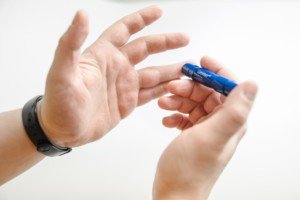
That number you see in your glucose meter after eating is very important.
The non-fasting value of blood sugar levels can indicate the possibility of prediabetes or diabetes.
“The timing of non-fasting blood glucose levels is important,” says Alison Massey, MS, RD, LDN, registered dietitian and certified diabetes educator with over 10 years of experience in various community and clinical settings.
“Typically, if someone has diabetes we suggest they monitor before meals (target 80-130 mg/dL) and sometimes post-prandially (two hours after meals) which should be less than 180 mg/dL.
“Monitoring a pre- and a two-hour after meal blood glucose provides individuals with diabetes a better idea of how the food they are consuming is impacting their blood glucose level.”
Values for Non-Fasting Glucose (Blood Sugar) and What They Mean
• For non-diabetics, the normal glucose reading two hours after a meal should be less than 140 mg/dL.
• You will likely be diagnosed with diabetes if any random blood sugar reading is at least 201.
Not all people with undiagnosed diabetes have symptoms (unintentional weight loss, fatigue, excessive hunger, excessive thirst or urination), though a few of these symptoms can also slip under the radar because the person blames them on “I’m getting old” or “I’m getting out of shape.”
Some people may blame unplanned weight loss or excessive hunger on stress.
Alert: A glucose reading (either fasting or non-fasting) that’s in the prediabetic range, should not be the be-all, end-all for being diagnosed with prediabetes.
Blood sugar can be elevated due to chronic stress, long-term insomnia or even short-term sleep difficulties.










































